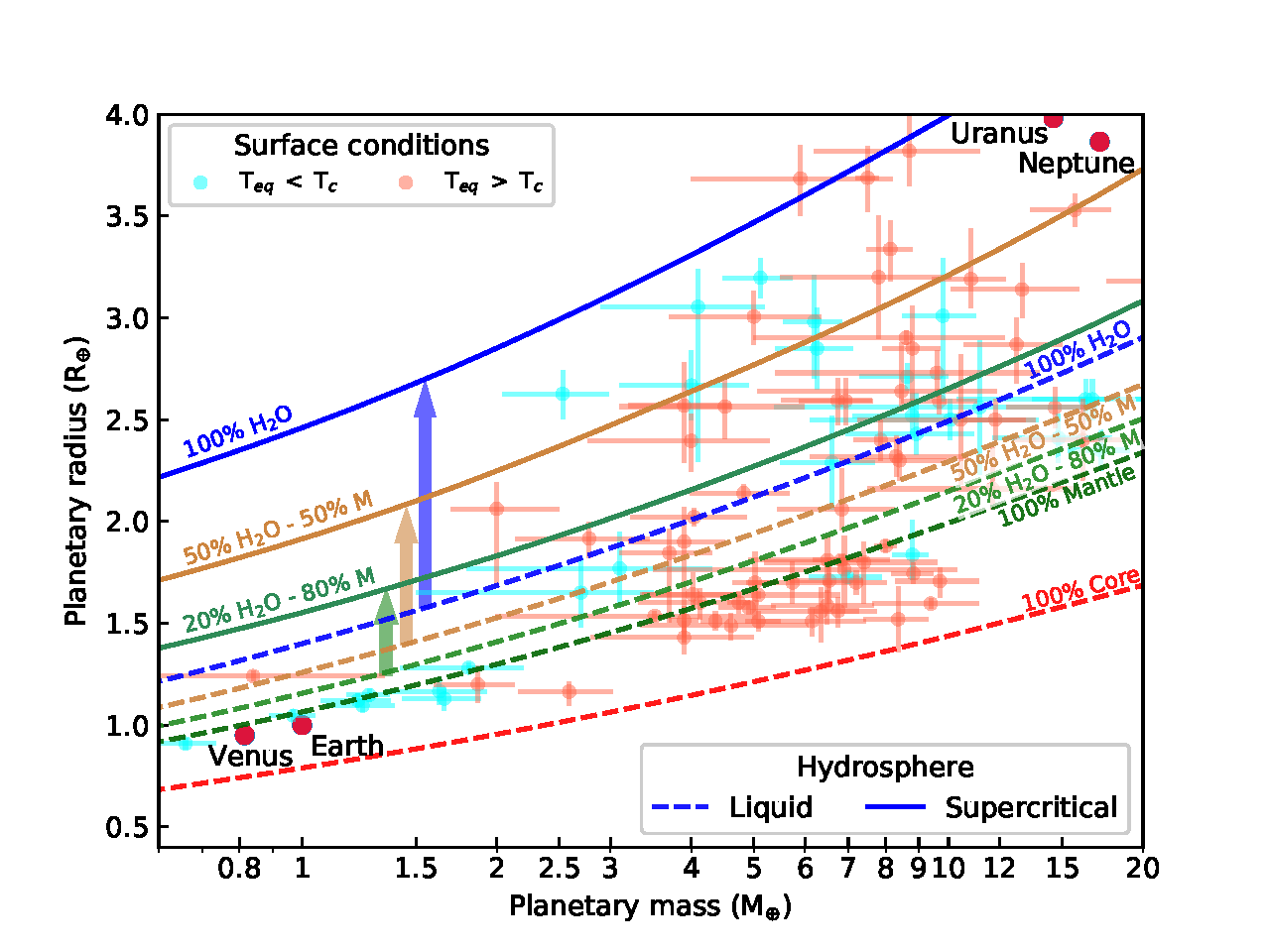One way to characterize low-mass exoplanets (ie. less than 20 times the mass of the earth) is by their apparent density, that is the relation between their mass and radius. This relation gives insights on their composition, although for a bulk density there is a degeneracy of possible solutions for the internal structure of the planet. Nevertheless, low-mass exoplanets are usually classified in two classes. "Super-Earths" are rocky worlds with a density similar to the Earth. "Mini-Neptunes" are worlds with a density comparable to Neptune, linked to their high water and planetary ices content (though no example exists in the Solar System).
Rocky low-mass exoplanets may incorporate a variable fraction of water in their bulk mass. As of 2020, the mass-radius relations computed with internal structure models would account for it, but only with water in the liquid or icy state. But, because of the detection methods, most of the detected exoplanets are very close to their host star and thus are strongly irradiated. Their equilibrium temperatures, computed with simple atmospheric models, suggest that water can not be in liquid state and is more likely in the form of vapor, or even supercritical fluid if present in a large amount. Water vapor and supercritical water have much lower densities than liquid water (or water ice). As such, their presence may inflate the apparent radius of exoplanets or, conversely, substancially change the mass-radius relation of a water-rich planet.
I thus implemented an equation of state for supercritical water in an internal structure model for exoplanets, developped in Laboratoire d'Astrophysique de Marseille. Using this EoS, we find that the updated mass-radius relations for highly irradiated water-rich low-mass exoplanets provides an explanation of the nature of low-mass exoplanets with a radius previously incompatible with our understanding of the "Mini-Neptunes" class (which required, in addition with a large fraction of liquid water, thick H/He atmospheres to explain their density). The presence of water in supercritical state inflates the apparent radius of the planet and may reconcile the measured properties of low-mass exoplanets with their formation scenarios, incompatible with a high H/He atmosphere.
